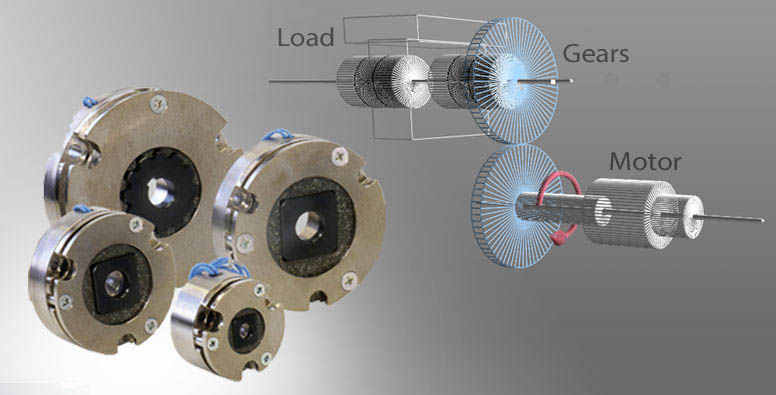Welcome Friend!

I heard of inertia, but what is reflected inertia?
Making sense of technical terms can be quite daunting if you don't work with them every day. Most people have heard of inertia. The law of inertia is that a body in motion stays in motion, and a body at rest stays at rest. Inertia, or moment of inertia, is an object's resistance against changing of its rotational movement.
In the world of clutches and brakes, inertia is a critical design parameter. It determines clutch or brake life, as well as suitability for an application. A vehicle system has some amount of inertia, but the amount of inertia that the wheel brake sees is entirely different and is based on speed ratio back to the brake.
When speed ratio is involved between the object and the clutch or brake, we need to take that into consideration to figure out the inertia that the clutch or brake "feels."
| Load inertia is: |  |
| Whereas, reflected inertia is: |  |
 |
For example, an object's load inertia is 1 lb.ft^2, turning at 10 rpm but the brake is indirectly connected to the object via a gearbox with a speed ratio of 1:10 (brake is 100 rpm). |
 |
The inertia that the brake feels (reflected inertia) is 1 lb.ft^2 x (10/100)^2 = 0.01 lb. ft^2. |
 |
So, this is a significant reduction. Start from the object inertia of 1, and reflected inertia is only 1% of that in this case. But the opposite could be true... for example, if brake speed is 10 rpm and object's rpm is 100 rpm, the reflected inertia on brake would be 1 x (100/10)^2 = 100. Because it has such an enormous impact, we always ask for speed ratio when evaluating new applications. |
Ogura manufacturers a wide variety of electromagnetic clutches and brakes for industrial, automotive, and outdoor power applications. Robotics, automation, and electrification are primary focus areas for new applications and will continue this way for years to come.
Benefits you will see using Ogura holding brakes:
- Long life
- High volume manufacturing capability
- Highest quality
- Lowest risk
- Customization
- Optimization
- Thin profile, light weight, low power
